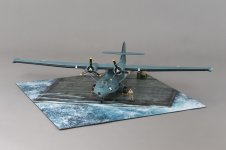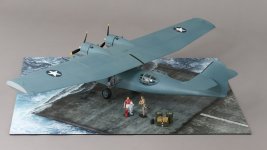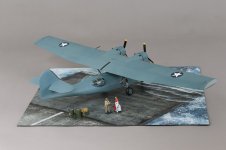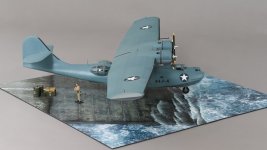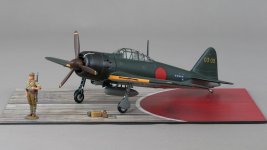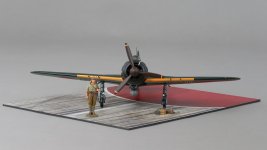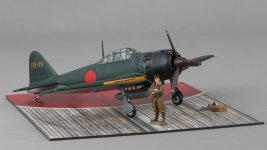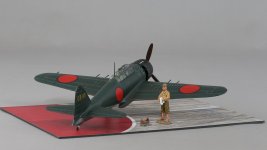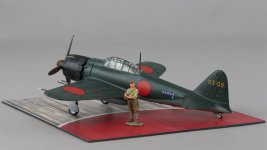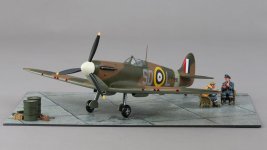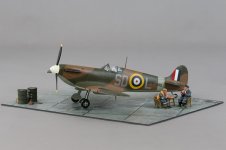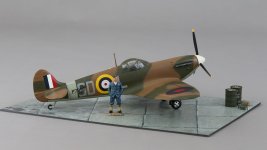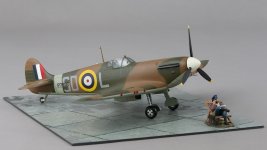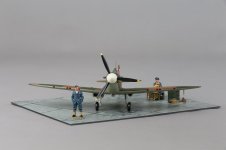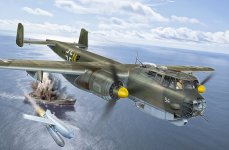Gunn Miniatures
Command Sergeant Major
- Joined
- Jun 18, 2009
- Messages
- 2,719
WOW333 Dornier Do.217 with Henschel Hs.293 Guided Bomb
The Dornier Do.217 was designed as a Luftwaffe bomber during World War II and came about as a more powerful development of the Dornier Do.17 also known as the Fliegender Bleistift ("flying pencil").
Designed between 1937 and 1938 as a heavy bomber, but not meant to be capable of the longer-range missions envisioned for the larger Heinkel He.177, the Dornier 217's design was refined during 1939 and production began in late 1940. It entered service in early 1941 and by the beginning of 1942 was available in significant numbers.
The Dornier 217 had a much larger bomb load capacity and had a much greater range than the Dornier 17. In later variants, dive bombing and maritime strike capabilities using glide bombs were experimented with considerable success being achieved. Early Do. 217 variants were more powerful than the contemporary Heinkel He.111 & Junkers Ju.88, having a greater speed, range and bomb load. The Do. 217 served on all fronts in all roles. On the Eastern Front and Western fronts, it operated as a strategic and torpedo bomber and reconnaissance aircraft. It also performed tactical operations, either direct ground assault or anti-shipping strikes. The Do 217 was also converted to the night fighter role and and saw considerable action in the Defence of the Reich campaign until late in the war.
The type also served in anti-shipping units in the Mediterranean, attacking Allied convoys and naval units. In 1943 the Do. 217 was the first aircraft to deploy a precision guided missile in combat, when Fritz X radio-guided bombs sank the Italian battleship Roma in the Mediterranean. Our Dornier 217 is fitted with the Henschel 293 guided bomb, a particularly successful munition that was responsible for sinking or damaging thousands of tons of Allied shipping. Its success was somewhat negated towards the end of the war by the Allies developing radio jamming equipment that interfered with the radio transmission of the bomb.
Our 1/30 scale Model is limited to 3 in number and is priced at $1100 plus shipping.
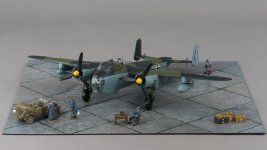
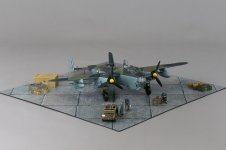
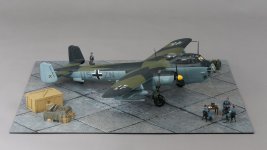
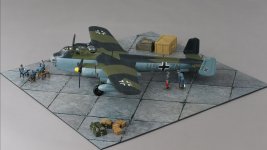
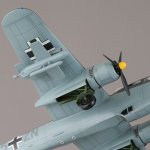
That's all for this month, we sincerely hope you enjoy the pictures and would love to hear from you if any of these magnificent models appeal to you. They are all now on our website www.tomgunn.co.uk and can be paid for upfront or over an extended monthly period. All Gunn Club members qualify for a 10% discount on the website listed price, joining is free so well worth registering.
We hope everyone is staying safe and taking care in these troubled times.
Best wishes The Gunn Team
The Dornier Do.217 was designed as a Luftwaffe bomber during World War II and came about as a more powerful development of the Dornier Do.17 also known as the Fliegender Bleistift ("flying pencil").
Designed between 1937 and 1938 as a heavy bomber, but not meant to be capable of the longer-range missions envisioned for the larger Heinkel He.177, the Dornier 217's design was refined during 1939 and production began in late 1940. It entered service in early 1941 and by the beginning of 1942 was available in significant numbers.
The Dornier 217 had a much larger bomb load capacity and had a much greater range than the Dornier 17. In later variants, dive bombing and maritime strike capabilities using glide bombs were experimented with considerable success being achieved. Early Do. 217 variants were more powerful than the contemporary Heinkel He.111 & Junkers Ju.88, having a greater speed, range and bomb load. The Do. 217 served on all fronts in all roles. On the Eastern Front and Western fronts, it operated as a strategic and torpedo bomber and reconnaissance aircraft. It also performed tactical operations, either direct ground assault or anti-shipping strikes. The Do 217 was also converted to the night fighter role and and saw considerable action in the Defence of the Reich campaign until late in the war.
The type also served in anti-shipping units in the Mediterranean, attacking Allied convoys and naval units. In 1943 the Do. 217 was the first aircraft to deploy a precision guided missile in combat, when Fritz X radio-guided bombs sank the Italian battleship Roma in the Mediterranean. Our Dornier 217 is fitted with the Henschel 293 guided bomb, a particularly successful munition that was responsible for sinking or damaging thousands of tons of Allied shipping. Its success was somewhat negated towards the end of the war by the Allies developing radio jamming equipment that interfered with the radio transmission of the bomb.
Our 1/30 scale Model is limited to 3 in number and is priced at $1100 plus shipping.





That's all for this month, we sincerely hope you enjoy the pictures and would love to hear from you if any of these magnificent models appeal to you. They are all now on our website www.tomgunn.co.uk and can be paid for upfront or over an extended monthly period. All Gunn Club members qualify for a 10% discount on the website listed price, joining is free so well worth registering.
We hope everyone is staying safe and taking care in these troubled times.
Best wishes The Gunn Team


